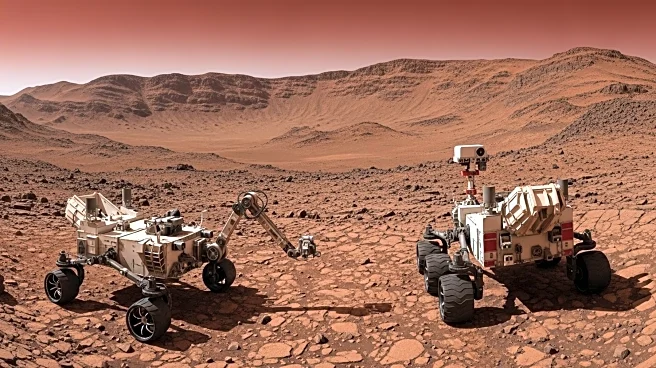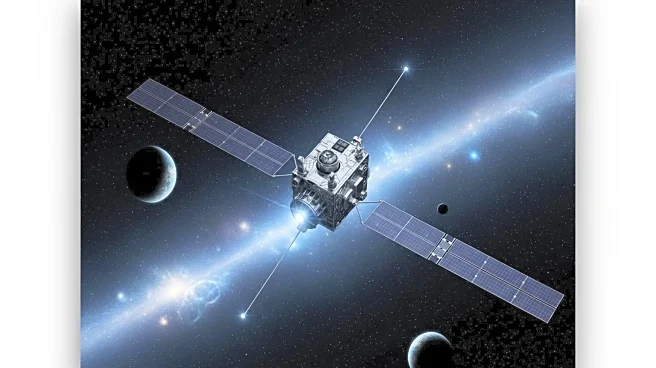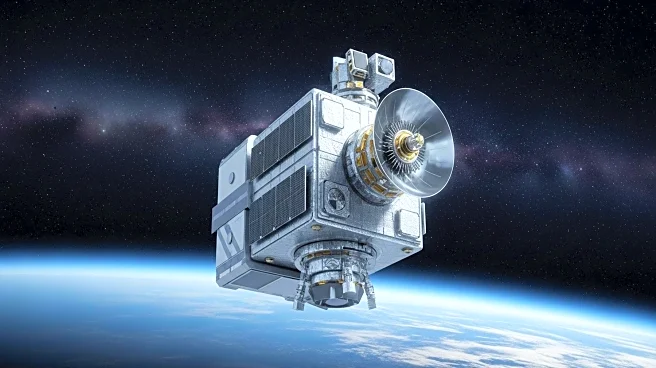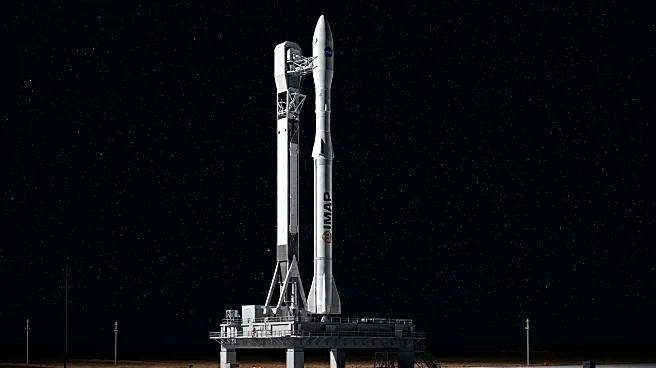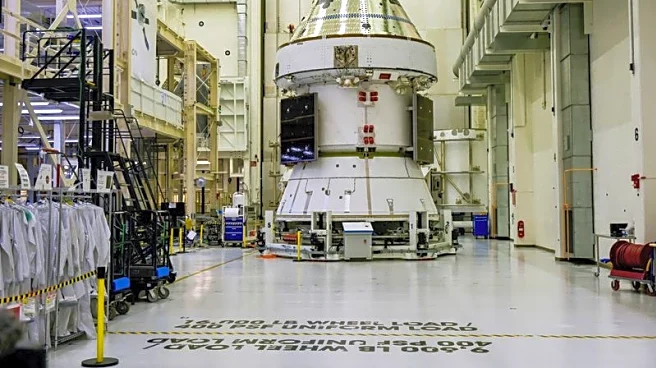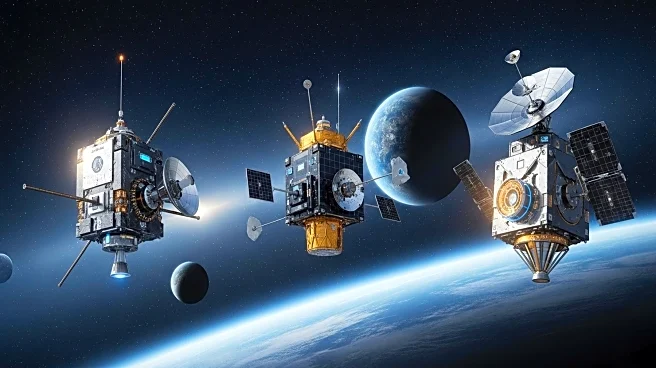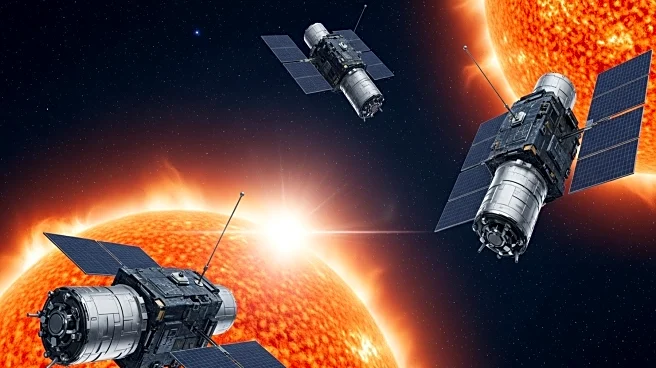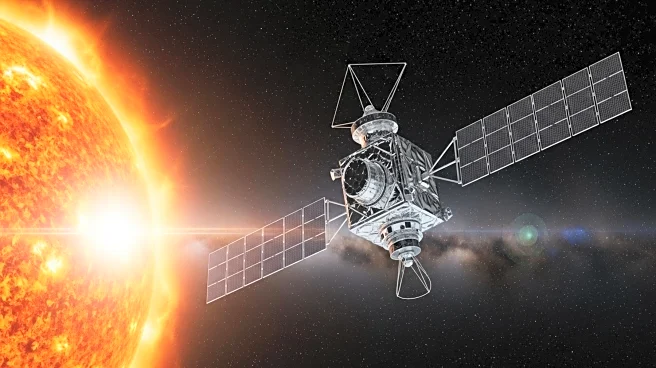What is the story about?
What's Happening?
The SpaceX Falcon 9 rocket's first stage has successfully landed on the company's drone ship, 'Just Read the Instructions,' stationed in the Atlantic Ocean off the coast of Florida. This marks another successful recovery for SpaceX's reusable rocket technology. Meanwhile, the second stage engine of the Falcon 9 has cut off, and the Interstellar Mapping and Acceleration Probe (IMAP) observatory is scheduled to separate from the rocket shortly before 9 a.m. The IMAP will enter a coast phase to align its trajectory with its intended destination, an orbit about a million miles from Earth at a Lagrange Point called L1. This mission is part of ongoing efforts to map and understand the interstellar medium and cosmic rays.
Why It's Important?
The successful landing of the Falcon 9's first stage underscores SpaceX's continued advancements in reusable rocket technology, which significantly reduces the cost of space travel and increases the frequency of launches. The IMAP mission is crucial for scientific research, as it aims to provide insights into the interstellar medium and cosmic rays, which are fundamental to understanding the universe's structure and evolution. The data collected by IMAP could have implications for space exploration and our understanding of cosmic phenomena, potentially influencing future missions and scientific theories.
What's Next?
Following the separation of the IMAP observatory, it will begin its mission to study the interstellar medium and cosmic rays. SpaceX will continue to monitor the performance of the Falcon 9's reusable components, aiming to further refine and improve their technology. The success of this mission may lead to more frequent and cost-effective launches, facilitating a broader range of scientific and commercial space endeavors.
AI Generated Content
Do you find this article useful?



